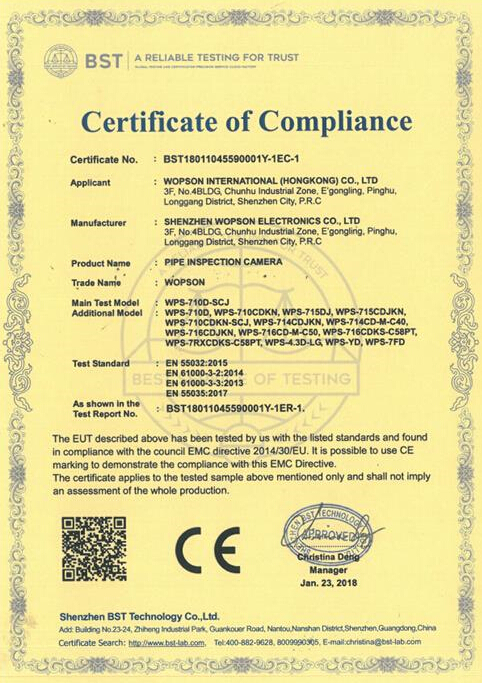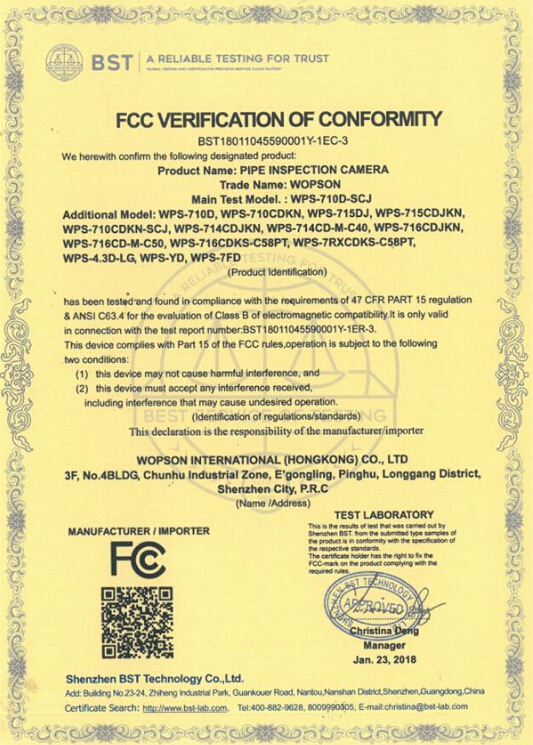Contact Details
-
- Email : mary@wopson.com
- Phone : 008616670203501
- Fax : 008675584692156
- Address : 3F,No.4BLDG, Chunhu Industrial Zone , E'gongling,Pinghu, Longgang District,Shenzhen City, P.R.C
News
-
Difference between non-excavation repair UV curing method and CIPP flip repair method
2019-01-03
1. UV curing method CIPP flexibility and innovation
All drainage pipes are separate, with different pipe diameters and shapes, and have special requirements for aggressive water flow and mechanical load carrying capacity. In addition, the local conditions are also quite different. Therefore, the glass fiber hose lining device with very good material properties can adopt a flexible and diverse solution, and adopts a relatively quick installation method to meet the non-excavation lining repair of the drainage pipe. The higher requirements, to achieve cost savings, and to extend the life of the pipeline. UV curing method CIPP non-excavation repair can produce hoses up to 500M in length. Even if the dimensions in a section of the pipeline change, or the pipeline has a curvature within 30°, the wrinkle-free repair can be performed. The hose is suitable for various pipes: round, oval, egg-shaped, square and other special shapes. The lining repair range: from DN150 to DN1200, the inner wall thickness is from 3mm to 12mm. Flexibility, speed, high degree of innovation, short response time and unique problem-solving methods make the UV curing CIPP liner repair process and equipment save a lot of resources during the planning and construction phase of urban pipe network repair.
2, the repair time is short, can be put into use immediately after repair
From the arrival of the scene to the completion of the lining repair mission. The water in the pipe is drained first, and the sliding foil is placed in the appropriate position, and then the rolled Plexiglas hose is pulled from the deep well into the pipe to be repaired. Due to the configuration of the longitudinal reinforcement to absorb the torsion, the tensile strength is increased, and the glass fiber hose is prevented from being scratched or excessively expanded. After a special fixing device is placed at one end of the fiberglass hose, the tube is opened by using compressed air. The curing method can be cured by ultraviolet light or steam. After the resin is hardened, the glass fiber lining pipe is covered on the sewage pipe. It not only has the function of sealing, but also has the reinforcing effect. After the tube becomes hard, the fixing device is removed, the inner membrane of the tube is taken out, the side water inlet is opened, and the damaged old pipe is repaired. It usually takes only 3-5 hours to complete the lining repair task of an old pipe, which is very beneficial for the improvement of pipe network transformation work efficiency. Once the damaged pipeline is repaired, the pipeline can be put into operation immediately after the lining repair operation. This process has been adopted by municipal administrations around the world.
3. Comparison with repair process
UV curing method CIPP lining is suitable for curing by steam or UV lamp. Compared with traditional polyester needle felt hose with hot water curing process, steam or UV lamp curing process is better than traditional needle felt hose. The curing process not only has low energy requirements, especially the UV curing process, no water source on site, simple operation and short curing time. Throughout the curing process, the lining process can be controlled at any time by CCTV monitoring installed in the front of the UV. Secondly, the UV curing method CIPP can be removed immediately after the curing operation. This means that the seal of the repaired pipe sandwich is inspected immediately in accordance with the requirements of the German DN1610 standard. The tests carried out by the independent inspection agency confirmed that the UV curing method CIPP glass fiber hose can obtain excellent quality, and this quality assurance has laid the foundation in the hose manufacturing process.
4, first-class material performance
The high resilience and durability of the glass fiber lining tube used in the UV curing method CIPP is based on its excellent mechanical properties. The ratio of the material that can not be obtained by the synthetic fiber lining material is obtained, and the mechanical properties of the UV-cured CIPP glass fiber lining tube are suitable for direct comparison with the long-term bending elastic traverse. During the 10,000-hour long-term stress fracture test, the attenuation factor of the permanent load was determined. This test takes into account the creep properties of the materials tested. According to the test results, the material properties under the condition of predicting the surface permanent load for more than 50 years. In addition, the UV curing method CIPP liner has an attenuation factor of 1.35 compared to other liners, resulting in a long-term flexural modulus of elasticity. Therefore, the UV curing method CIPP liner can be applied under relatively thin wall thickness conditions. This means that the UV-curing CIPP liner can achieve the same strength as the polyester needle felt tube with a very thin wall thickness, even under extreme static load requirements. UV curing method CIPP glass fiber lining tube not only has high tensile strength, but also has the best radial extension expansion performance. However, due to the pull-in CIPP glass fiber lining structure, the lining tube has no axial extension expansion properties.

